How to analyze APP testing and process
In my current work, testing App will involve the following aspects: client, applet, h6 page, etc., which may seem different but are very different.
Click to add a picture description (up to 60 words)
1. Function module test: In fact, the most important thing about the function module test is to examine the tester’s logical thinking ability and understanding of requirements, as well as Some page interactivity, input and output considerations, etc., so the above three are common and there is not much difference.
2. Permission management:
1) Similar points: it is necessary to consider the situations where permissions are allowed and the situations where permissions are not allowed; it is necessary to test more pages without system permissions
2 )Difference: When testing the App, you need to consider whether the user can access mobile communications, photo albums, cameras, storage space, etc., and what will happen when the permissions are turned off. Whether the mini program requires WeChat authorization, whether re-authorization is required after switching login accounts, etc.; The consideration of permissions on h6 pages is generally whether you can enter the page without the login entrance.
For example, take a common mobile phone permission test: when we run the software for the first time, we will grant a lot of permissions. Then we turn off the permissions and then open the application. What will happen?
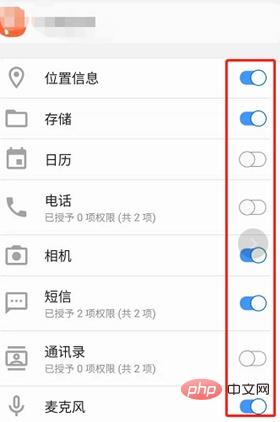
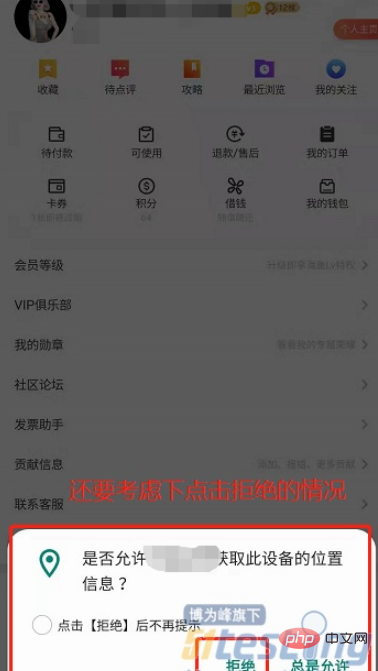
3. Compatibility test: Generally, companies will provide models that are commonly used by App users for testing. Generally, the commonly used Apps include : Android (Huawei, oppo, Xiaomi, etc.), IOS (iphoneX, iphone6, ipad, etc.), with so many mobile phone models, the page displayed may have errors, and some pictures or dynamic effects will appear completely different. This is It is very important to consider that poor user experience is also considered a bug, haha! Among them, I would like to especially remind you about the problem of notch, which is relatively common. In terms of mini programs, we mainly consider the compatibility, resolution, and QR code compatibility of different WeChat versions (whether the client's QR code sharing, the mini program's QR code sharing, etc. are displayed correctly, whether they are recognized successfully, etc.), and different browsers for H5 pages Check whether the display is correct.
4. Interactivity: When we test, we need to test from the user's perspective. If you have a bad experience, you can also communicate with the product, such as: how to switch pages, dynamic exchange effects, and return to the previous level. , interactive prompts, etc.
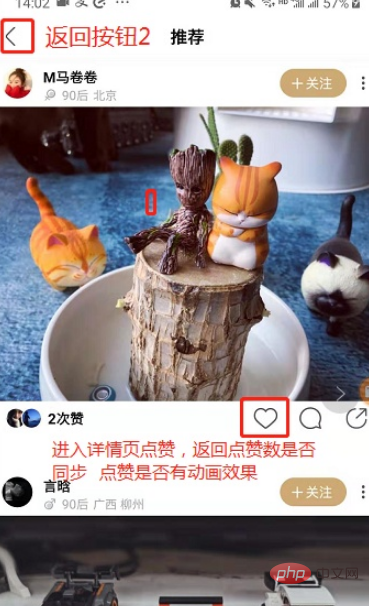
5. Network conditions: network delay (you can use packet capture software to modify the network status), network wifi/4g/3g/no network/airplane mode, none Switching from network to network/network to non-network. Click the button when the network is disconnected, and click again after connecting to the network to see the effect.
Example: After logging in to the app, turn off wifi and data traffic or turn on airplane mode, check whether there is a network abnormality prompt on the page, and after restoring the network, refresh the page to see if it displays normally.
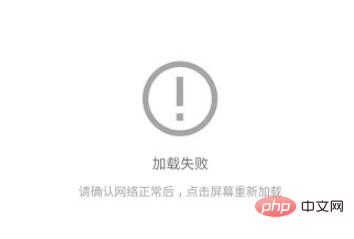
#6. Performance test: Performance problems on the App are common, such as white screen, resource usage, page loading time, lag, and first login time. For example, performance testers will conduct performance tests based on the application's response time, memory usage, CPU usage, power consumption, traffic, etc. It is understood that there are many performance problems on Android phones in small programs.
7. Caching problem: Apps and mini-programs often consider caching. Mini-programs can have a maximum local cache of 10M. So what is the cache used for? Improve the smoothness of the page, no need to request data from the server again, reduce server resource space, common cache problems: forced exit when clearing the cache, system settings to clear the cache, etc.;
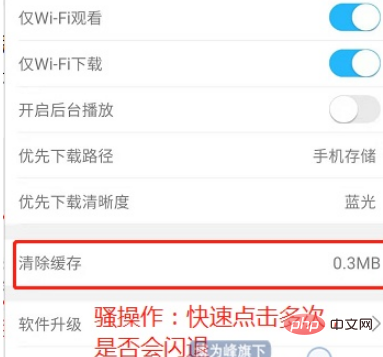
8. Memory related: Mainly test the situation when the mobile phone’s memory space is full, and whether opening many apps that occupy memory will cause abnormalities to the system (for Apps);
9. Special operations: Of course, some special user operations also Things to consider include: whether long-pressing the picture can save the picture, whether sliding the page left and right can switch pages, whether continuous clicks make two requests (it needs to be limited to only one request), and whether the page data is loaded by sliding up and down (flashbacks often occur). question), whether the picture can continue to slide after sliding to the last page, when clicking on the download status when prompted to download the application on the h6 or mini program page, exiting the current process while opening, etc., there are too many, and there are no tricks you can’t think of. Isn’t this what a test is supposed to do, haha!
10. Storage processing: (app) If the storage space is full, can it still be installed successfully? If the installation is successful and the storage space is full, can the application be opened? When the user is using the program and the memory is full, Whether there will be prompts; whether cache files will appear when saving pictures, whether downloaded files and other information are correctly stored in the phone.
11. Push/pop-up messages: The push messages of the mini program are the messages in the mini program assistant, and the App is the form of message push. Pay attention to whether the push messages set in the background are correctly prompted, click to see whether the push message enters the application (whether clicking on the pop-up window will affect the current application), whether the push message is sent at a scheduled time or triggered, etc. What are the triggering conditions for the pop-up window, how long the pop-up window is displayed for, and whether there is a mask (whether the mask disappears when cancelled, what happens when the mask is clicked, etc.)
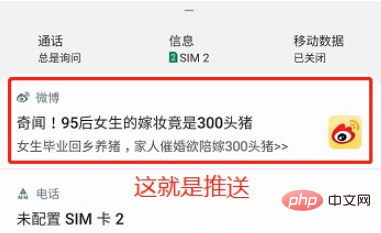
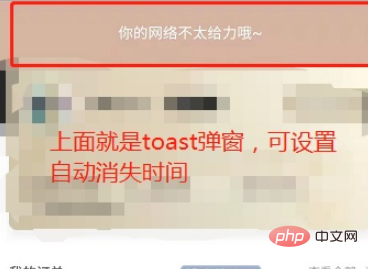
Message push of mini program:
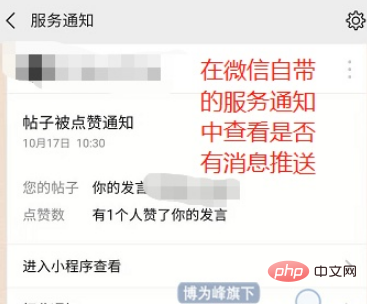
12. Small details: Others are related to the hardware problems of the mobile phone itself, such as battery ( You should pay attention to whether you can use the camera when the battery is low, etc.), messages, phone calls, etc.
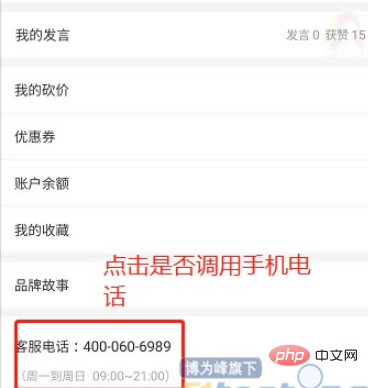
The above is the detailed content of How to analyze APP testing and process. For more information, please follow other related articles on the PHP Chinese website!

Hot AI Tools

Undresser.AI Undress
AI-powered app for creating realistic nude photos

AI Clothes Remover
Online AI tool for removing clothes from photos.

Undress AI Tool
Undress images for free

Clothoff.io
AI clothes remover

Video Face Swap
Swap faces in any video effortlessly with our completely free AI face swap tool!

Hot Article

Hot Tools

Notepad++7.3.1
Easy-to-use and free code editor

SublimeText3 Chinese version
Chinese version, very easy to use

Zend Studio 13.0.1
Powerful PHP integrated development environment

Dreamweaver CS6
Visual web development tools

SublimeText3 Mac version
God-level code editing software (SublimeText3)

Hot Topics
 1387
1387
 52
52
 How to perform real-name authentication on Jingdong Mall APP
Mar 19, 2024 pm 02:31 PM
How to perform real-name authentication on Jingdong Mall APP
Mar 19, 2024 pm 02:31 PM
How to get real-name authentication on Jingdong Mall APP? Jingdong Mall is an online shopping platform that many friends often use. Before shopping, it is best for everyone to conduct real-name authentication so that they can enjoy complete services and get a better shopping experience. The following is the real-name authentication method for JD.com, I hope it will be helpful to netizens. 1. Install and open JD.com, and then log in to your personal account; 2. Then click [My] at the bottom of the page to enter the personal center page; 3. Then click the small [Settings] icon in the upper right corner to go to the setting function interface; 4. Select [Account and Security] to go to the account settings page; 5. Finally, click the [Real-name Authentication] option to fill in the real-name information; 6. The installation system requires you to fill in your real personal information and complete the real-name authentication
 How to decrypt app resources in cocos2d-LUA reverse engineering
May 16, 2023 pm 07:11 PM
How to decrypt app resources in cocos2d-LUA reverse engineering
May 16, 2023 pm 07:11 PM
Let's take the Dashen apk as an example. Through the previous analysis of the app decryption Lua script, we can decrypt the Lua script of the Dashen apk. Now let's decrypt its resources (configuration files and pictures, etc.). Let’s take a more important configuration file as an example. Before decryption: the file header also has a signature value: fuckyou!. Seeing this, we first thought about whether it was also encrypted with xxtea. We used the above method to decrypt it with xxtea first, and then decompressed it. We found that it was still garbled, and an error occurred during the operation. Obviously, we have to deny what we just said. conjecture. We continue to decrypt the configuration file step by step. Think about it for a moment, the file header is: fuckyou! If you want to decrypt files, you will inevitably need to process
 Microsoft improves Windows 11's Smart App Control, but you might not be able to use it
Apr 17, 2023 pm 04:40 PM
Microsoft improves Windows 11's Smart App Control, but you might not be able to use it
Apr 17, 2023 pm 04:40 PM
Microsoft launched SmartAppControl, a Windows 11 security feature, earlier this year. At the time, Microsoft described it as a protection tool that "blocks untrusted or potentially dangerous applications." What was unique about the tool at the time was that it determined whether it should run on a Windows 11 device. SmartAppControl initially runs in evaluation mode; it is in this mode that the application decides whether it should be opened. Microsoft did reveal that users can enable Smart App Control in the App and Browser Controls section of the Windows Security app. According only to Microsoft, SmartAppC
 How to view and delete App Store purchase history on iPhone
Apr 13, 2023 pm 06:31 PM
How to view and delete App Store purchase history on iPhone
Apr 13, 2023 pm 06:31 PM
The AppStore is a marketplace for iOS-related applications. Here you can also find free apps and paid apps. Apps can be gaming apps, productivity apps, utility apps, social media apps, and many more categories of apps. You may have downloaded or purchased many apps for iPhone from the AppStore. Now you may be wondering how to view the purchase history of apps purchased in the App Store. Sometimes, you may want to hide certain purchases from your purchase history for privacy reasons. In this article, we will guide you to find your purchase history and how to delete/hide purchases from your purchase history if necessary. Part 1
 Steps and precautions for registering a Hong Kong Apple ID (enjoy the unique advantages of the Hong Kong Apple Store)
Sep 02, 2024 pm 03:47 PM
Steps and precautions for registering a Hong Kong Apple ID (enjoy the unique advantages of the Hong Kong Apple Store)
Sep 02, 2024 pm 03:47 PM
Apple's products and services have always been loved by users around the world. Registering a Hong Kong Apple ID will bring more convenience and privileges to users. Let’s take a look at the steps to register a Hong Kong Apple ID and what you need to pay attention to. How to register a Hong Kong Apple ID When using Apple devices, many applications and functions require using Apple ID to log in. If you want to download applications from Hong Kong or enjoy the preferential content of the Hong Kong AppStore, it is very necessary to register a Hong Kong Apple ID. This article will detail the steps on how to register a Hong Kong Apple ID and what you need to pay attention to. Steps: Select language and region: Find the "Settings" option on your Apple device and enter
 How to cancel the data package on China Unicom app How to cancel the data package on China Unicom
Mar 18, 2024 pm 10:10 PM
How to cancel the data package on China Unicom app How to cancel the data package on China Unicom
Mar 18, 2024 pm 10:10 PM
The China Unicom app can easily meet everyone's needs. It has various functions to solve your needs. If you want to handle various services, you can easily do it here. If you don't need it, you can unsubscribe in time here. It is effective. To avoid subsequent losses, many people sometimes feel that the data is not enough when using mobile phones, so they buy additional data packages. However, they don’t want it next month and want to unsubscribe immediately. Here, the editor explains We provide a method to unsubscribe, so that friends who need it can come and use it! In the China Unicom app, find the "My" option in the lower right corner and click on it. In the My interface, slide the My Services column and click the "I have ordered" option
 How to issue invoices with multipoint app
Mar 14, 2024 am 10:00 AM
How to issue invoices with multipoint app
Mar 14, 2024 am 10:00 AM
As a shopping voucher, invoices are crucial to our daily lives and work. So when we usually use Duodian app for shopping, how can we easily issue invoices in Duodian app? Below, the editor of this website will bring you a detailed step-by-step guide for opening invoices on multi-point apps. Users who want to know more must not miss it. Come and follow the text to learn more! In the [Invoice Center], click [Multi-Point Supermarket/Free Shopping], select the order that needs to be invoiced on the completed order page, click Next to fill in the [Invoice Information], [Recipient Information], and click Submit after confirming that they are correct. After a few minutes, enter the receiving mailbox, open the email, click on the electronic invoice download address, and finally download and print the electronic invoice.
 How to use deep linking to backdoor Facebook APP
May 19, 2023 pm 02:49 PM
How to use deep linking to backdoor Facebook APP
May 19, 2023 pm 02:49 PM
Recently, the author discovered a deep link vulnerability in the Facebook Android APP. Using this vulnerability, the Facebook Android APP installed on the user's mobile phone can be converted into a backdoor program (Backdoor) to achieve backdooring. In addition, this vulnerability can also be used to repackage the Facebook APP and send it to specific target victims for installation and use. Let’s take a look at the author’s discovery process of this vulnerability, and how to construct it through Payload and finally transform it into a security risk in the actual production environment of Facebook APP. When I usually do public testing when discovering vulnerabilities, I will first carefully understand the application mechanism of the target system. In my last blog, I have shared how to parse Face




